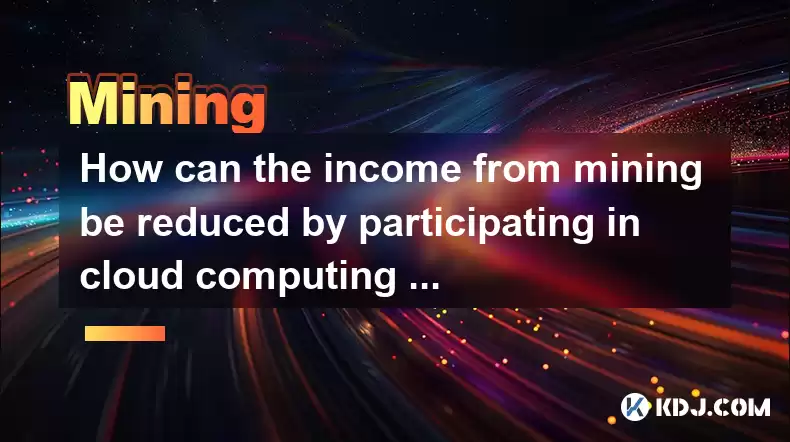-
 Bitcoin
Bitcoin $116500
1.98% -
 Ethereum
Ethereum $3851
6.94% -
 XRP
XRP $3.070
3.95% -
 Tether USDt
Tether USDt $1.000
0.04% -
 BNB
BNB $774.7
1.77% -
 Solana
Solana $171.9
4.66% -
 USDC
USDC $1.000
0.01% -
 Dogecoin
Dogecoin $0.2142
6.71% -
 TRON
TRON $0.3387
1.28% -
 Cardano
Cardano $0.7678
5.61% -
 Sui
Sui $3.747
9.68% -
 Hyperliquid
Hyperliquid $39.16
3.69% -
 Stellar
Stellar $0.4157
6.28% -
 Chainlink
Chainlink $17.93
9.21% -
 Bitcoin Cash
Bitcoin Cash $578.1
3.28% -
 Hedera
Hedera $0.2531
5.60% -
 Ethena USDe
Ethena USDe $1.001
-0.02% -
 Avalanche
Avalanche $22.75
3.82% -
 Litecoin
Litecoin $120.1
3.76% -
 UNUS SED LEO
UNUS SED LEO $8.953
-0.37% -
 Toncoin
Toncoin $3.323
4.76% -
 Shiba Inu
Shiba Inu $0.00001266
4.22% -
 Uniswap
Uniswap $10.13
7.08% -
 Polkadot
Polkadot $3.786
5.09% -
 Dai
Dai $1.000
-0.02% -
 Monero
Monero $273.0
-5.03% -
 Bitget Token
Bitget Token $4.391
1.62% -
 Cronos
Cronos $0.1480
5.45% -
 Pepe
Pepe $0.00001091
5.80% -
 Ethena
Ethena $0.6314
11.93%
How can the income from mining be reduced by participating in cloud computing power mining?
Cloud mining, while convenient, doesn't guarantee profit; contract costs, hashrate variations, market volatility, and provider reputation heavily influence profitability, potentially reducing income compared to solo mining or expectations.
Mar 22, 2025 at 01:14 am

Key Points:
- Cloud mining eliminates the need for expensive hardware and maintenance, potentially lowering overall mining costs.
- Reduced electricity costs are a significant factor in lowering mining expenses.
- Contract terms and fees associated with cloud mining services can significantly impact profitability.
- Market volatility and difficulty adjustments influence profitability irrespective of mining method.
- Transparency and reputation of the cloud mining provider are crucial for avoiding scams and maximizing returns.
How Can the Income from Mining Be Reduced by Participating in Cloud Computing Power Mining?
While cloud mining offers accessibility to cryptocurrency mining without the need for physical hardware, it doesn't inherently guarantee higher profits. Several factors can lead to reduced income compared to expectations, or even compared to solo mining. Understanding these factors is crucial before investing.
One major factor is the cost of the cloud mining contract. Many providers offer contracts at varying price points and durations. The initial investment can be substantial, and the return on investment needs careful calculation. A poorly chosen contract with high fees can significantly reduce your potential profit margins. Always thoroughly review the terms and conditions before committing.
Another significant contributor to reduced income is the hashrate offered by the cloud mining provider. The hashrate represents the computing power allocated to your mining operation. A lower hashrate means less chance of successfully mining a block and earning cryptocurrency rewards. Providers often advertise high hashrates, but actual performance may vary, leading to lower-than-expected income.
Electricity costs, a major expense in traditional mining, are largely absorbed by the cloud mining provider. However, this doesn't eliminate all costs. The provider still needs to cover electricity and operational expenses, which are factored into the contract price. While you avoid direct electricity bills, the indirect cost is embedded within the contract fees. This cost can still influence the profitability.
The volatility of cryptocurrency markets is a critical external factor. Even with efficient cloud mining, the value of the mined cryptocurrency can fluctuate significantly. A sharp price drop can negate any profits made from mining, regardless of your chosen method. Understanding market trends and risk management are essential.
The difficulty of mining is another key element. As more miners join a network, the difficulty of solving complex mathematical problems increases. This makes it harder to mine blocks, leading to less frequent rewards. The difficulty adjustment is an inherent characteristic of most cryptocurrencies and impacts both cloud and traditional mining equally. This is a factor outside of your control as a miner.
The reputation and transparency of the cloud mining provider is paramount. The cryptocurrency space has a history of scams and fraudulent operations. Choosing a reputable provider with a transparent track record is crucial to avoid losing your investment entirely. Always research thoroughly and verify the provider's legitimacy before committing funds. Look for reviews and independent audits of their operations.
Choosing the right contract length is also a critical factor. Longer contracts may seem more appealing due to potentially lower per-hashrate costs, but market volatility can drastically alter the profitability over an extended period. Shorter contracts offer greater flexibility but might have higher initial costs.
Understanding the fees involved beyond the initial contract cost is crucial. Many providers have maintenance fees, withdrawal fees, or other hidden charges that can significantly reduce your final income. Always scrutinize the complete fee structure before signing any agreement. A detailed breakdown of all potential expenses is necessary for accurate profit projections.
Lack of control over the mining hardware is another potential drawback. Unlike traditional mining, you have no control over the hardware's specifications, maintenance, or upgrades. This dependence on the provider's infrastructure can lead to unexpected downtime or reduced efficiency. Reliability of the provider’s infrastructure is paramount.
Potential for scams and fraudulent operations remains a significant risk in the cloud mining industry. Numerous fraudulent operations promise unrealistic returns, leading to significant losses for unsuspecting investors. Always conduct thorough due diligence and verify the provider’s legitimacy before investing.
Lack of direct access to the mining equipment limits your ability to monitor the operation directly. This can make it difficult to verify the provider’s claims about hashrate and uptime, increasing the risk of being misled. Transparency and verifiable data are critical.
Frequently Asked Questions:
Q: Is cloud mining more profitable than solo mining?
A: Profitability depends on various factors, including the cost of the cloud mining contract, the hashrate offered, the price of the cryptocurrency, and the mining difficulty. Solo mining requires a significant upfront investment in hardware and electricity, while cloud mining involves contract costs and potential hidden fees. Neither method guarantees higher profits.
Q: How can I minimize the risk of losing money in cloud mining?
A: Thoroughly research and choose a reputable provider with a transparent track record. Carefully review the contract terms and conditions, including all fees and charges. Diversify your investments and avoid putting all your funds into a single cloud mining contract. Understand the volatility of cryptocurrency markets and manage your risk accordingly.
Q: Are there any hidden fees in cloud mining contracts?
A: Yes, many providers have hidden fees or charges beyond the initial contract cost. These can include maintenance fees, withdrawal fees, or other operational charges. Always request a complete breakdown of all fees before signing any contract.
Q: How do I choose a reputable cloud mining provider?
A: Look for providers with a proven track record, positive reviews from other users, and transparent operations. Verify their legitimacy through independent sources and avoid providers making unrealistic promises of high returns. Look for evidence of operational transparency.
Disclaimer:info@kdj.com
The information provided is not trading advice. kdj.com does not assume any responsibility for any investments made based on the information provided in this article. Cryptocurrencies are highly volatile and it is highly recommended that you invest with caution after thorough research!
If you believe that the content used on this website infringes your copyright, please contact us immediately (info@kdj.com) and we will delete it promptly.
- Dogecoin, Crypto, and the 25x Gains Dream: What's Next?
- 2025-08-07 20:50:12
- Dogecoin: A Second Chance for the OG Meme Coin?
- 2025-08-07 20:50:12
- BlockchainFX: Your Choice for Long-Term Crypto Gains?
- 2025-08-07 21:10:12
- Pepe Dollar's Presale Mania: Memecoin Staking and the Crypto Revolution
- 2025-08-07 21:10:12
- Aave Users Targeted in Sophisticated Phishing Scam: A DeFi Reality Check
- 2025-08-07 21:15:56
- Ollama Turbo & GPT-OSS: Revolutionizing AI Model Accessibility and Speed
- 2025-08-07 20:29:33
Related knowledge

What is "proof-of-work" and how does it relate to mining?
Aug 07,2025 at 02:03pm
Understanding the Concept of Proof-of-WorkProof-of-work (PoW) is a consensus mechanism used in blockchain networks to validate transactions and secure...

What are the differences between mining on Windows vs. Linux?
Aug 06,2025 at 11:29pm
Overview of Cryptocurrency Mining PlatformsCryptocurrency mining involves using computational power to solve complex cryptographic puzzles and validat...

How to use an old computer for cryptocurrency mining?
Aug 07,2025 at 12:42pm
Understanding the Feasibility of Using an Old Computer for MiningUsing an old computer for cryptocurrency mining may seem outdated, but it is still te...

Can you mine cryptocurrency using solar power?
Aug 07,2025 at 12:00am
Understanding the Basics of Cryptocurrency MiningCryptocurrency mining involves validating transactions on a blockchain network by solving complex cry...

How to build a mining rig inside a PC case?
Aug 06,2025 at 11:01pm
Understanding the Basics of a Mining Rig in a PC CaseBuilding a mining rig inside a PC case involves transforming a standard computer chassis into a d...

How to diagnose a faulty riser or cable in a mining rig?
Aug 07,2025 at 01:49am
Understanding the Role of Riser Cables in Mining RigsIn a cryptocurrency mining rig, riser cables serve as the bridge between the motherboard and the ...

What is "proof-of-work" and how does it relate to mining?
Aug 07,2025 at 02:03pm
Understanding the Concept of Proof-of-WorkProof-of-work (PoW) is a consensus mechanism used in blockchain networks to validate transactions and secure...

What are the differences between mining on Windows vs. Linux?
Aug 06,2025 at 11:29pm
Overview of Cryptocurrency Mining PlatformsCryptocurrency mining involves using computational power to solve complex cryptographic puzzles and validat...

How to use an old computer for cryptocurrency mining?
Aug 07,2025 at 12:42pm
Understanding the Feasibility of Using an Old Computer for MiningUsing an old computer for cryptocurrency mining may seem outdated, but it is still te...

Can you mine cryptocurrency using solar power?
Aug 07,2025 at 12:00am
Understanding the Basics of Cryptocurrency MiningCryptocurrency mining involves validating transactions on a blockchain network by solving complex cry...

How to build a mining rig inside a PC case?
Aug 06,2025 at 11:01pm
Understanding the Basics of a Mining Rig in a PC CaseBuilding a mining rig inside a PC case involves transforming a standard computer chassis into a d...

How to diagnose a faulty riser or cable in a mining rig?
Aug 07,2025 at 01:49am
Understanding the Role of Riser Cables in Mining RigsIn a cryptocurrency mining rig, riser cables serve as the bridge between the motherboard and the ...
See all articles

























































































